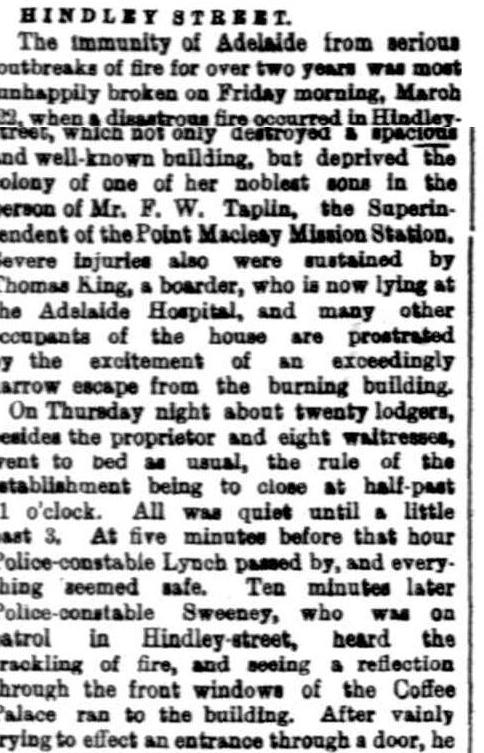While George Smith was in Adelaide on his way to Western Australia (see previous blog) he had time to visit several tourist attractions.
19/3/1889 Went out to see the Gully Water Fall in the Mt Lofty ranges south of Adelaide and was much delighted with it and the rugged scenery around and the sea at sunset looked like an immense looking glass oval shaped at my feet.
20/3/1889 Went out to see the celebrated sewerage farm North of Adelaide and was much delighted with it and on the farm was a crop of sorghum cutting sixty tons per acre also fruit trees and vegetables of great variety also ensilage pits in full work. Evening Chapel Grote St.
21/3/1889 Stayed home and read Green and Walkers debate on Christianity versus Spiritualism. Afternoon went to see the model of the famous Strasburg Clock and Exhibitions Buildings.
The first one was a waterfall. It's now called Waterfall Gully and it's 8 km east of Adelaide.
 |
| First waterfall, Waterfall Gully |
The second was a sewerage farm! But remember, George was a farmer so he was very interested in the crops grown at the farm as well as the technology. And he wasn't the only visitor. Adelaide was the first in Australia to establish a waste-disposal treatment system so people from all around Australia as well as international visitors called in to check it out. It was opened in 1881.
 |
| A history of Sunnybrae, Donovan & Associates, 1993 |
And the next day George went to see a clock. The Strasburg Clock was on display at the Exhibition Buildings in Adelaide and is now in the Powerhouse Museum in Sydney where it is one of their most popular exhibits. George was impressed as well and he made notes in the back of his diary about aspects of its design. It had been built in 1888 by a young Sydney clockmaker, Richard Bartholomew Smith (no relation), as a model of the famous clock in Strasburg Cathedral, Germany.
 |
| Strasburg Clock, Powerhouse Museum, Sydney |
 |
A description of the working of the Strasburg Clock
(Teacher notes, Powerhouse Museum) |
 |
| South Australian Advertiser, 29 March 1889 |
Finally, I decided to search for the Green and Walker debate on Christianity versus Spiritualism mentioned by George. And, to my surprise, found several references. The debate was held in Melbourne in 1878. George was a member of the Church of Christ so probably supported Mr Green's arguments.
 |
| Nineteenth Century Miracles, E H Britten [Google Books] |







.jpeg)


andMaryLeedMLC-001+edit.jpg)
,+MLC+edit.jpg)




































